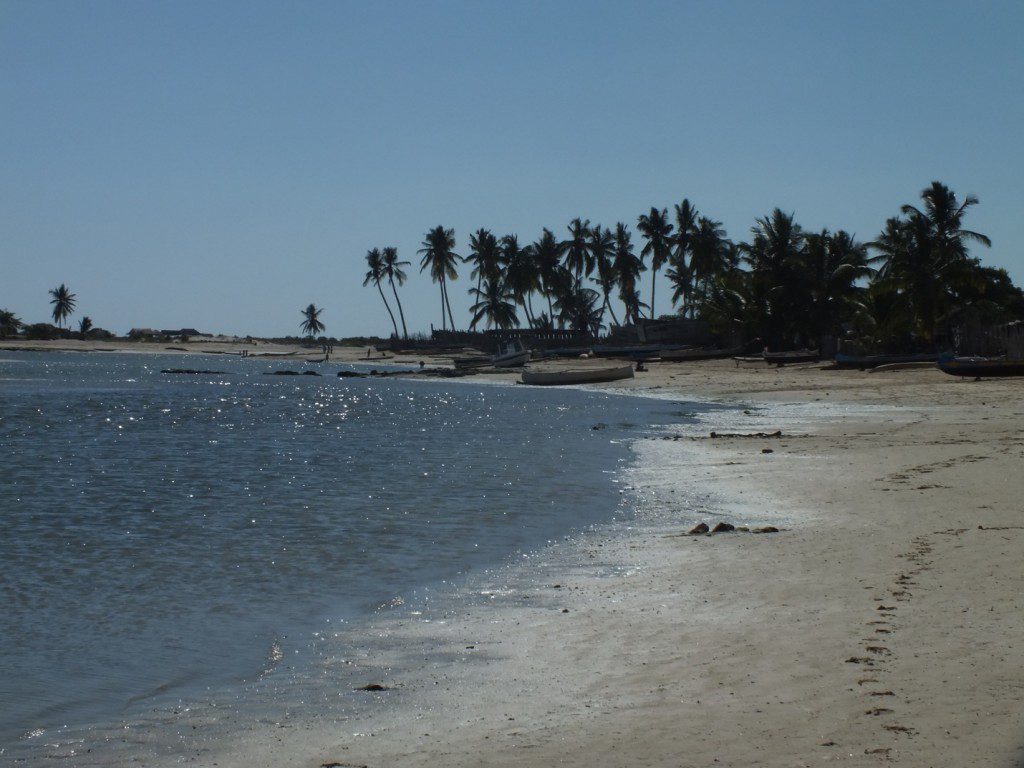By Samuel Blyth, Independent Researcher, Madagascar
 Belo-sur-Mer and the surrounding communities have a lot to offer residents, tourists and the occasional independent researcher, such as myself. Having been here for over two months, it is about time I shared some of my experiences.
Belo-sur-Mer and the surrounding communities have a lot to offer residents, tourists and the occasional independent researcher, such as myself. Having been here for over two months, it is about time I shared some of my experiences.
I arrived in Belo in early July to pursue my MSc thesis research on the ecosystem services that mangrove forests provide to neighbouring communities, with the help of my research assistant Jean-Luc. My work has involved planning and organisational time in Belo-sur-Mer, and visits to the villages of Antanamanimbo and Marofihitsy to determine the contrasting uses of the mangroves by the Vezo and Masikoro people.
Surveying the households of Antanamanimbo is a very pleasant experience as the village itself is located on a long sandbar on the seaward side of a mangrove shrouded estuary. This picturesque setting is not only a feast for the eyes, but also allows you to eat big, fresh crabs from the mangrove or fish from the sea on the other side of the village. Most people are very happy to spend a few minutes talking about their lives and their relationship with the mangroves. Knowing that Jean-Luc and I were students, the village president was more than willing to accept us into his community while we were there.
In Belo, occasionally a boutry is completed and gives the village an excuse for an all-night celebration prior to its launch. Personally I think that this is good reason for celebration, but perhaps not the best of ideas to do so on the night before you plan to pull many tonnes of boat down the beach by hand.
The launch itself is quite spectacular and gives me real respect for any great feat of construction before the use of modern machines, particularly those that involve moving large and heavy objects by manpower alone. To pull the hull of a large boutry down the beach at low tide takes a team of a few hundred, strong Vezo fishermen, along with anyone else who might be available. For the first launch that I participated in there were about 50 men trying to pull the hull of a small motorized boutry owned by a local hotel. Although not very big there was no way that it was going to move until everyone’s wives and children grabbed on to the lines and pulled as well.
With one nahoda (village elder) standing in bow calling the pull, the teams grab the cables and everyone strains in time. The first few pulls have no effect and more people are called to move from the audience and join in, squeezing in to find places near to the boutry where they are less likely to have to pull in the mud or water. Great excitement and relief come with the first feeling of movement from the massive blue and white painted hull begin to creep forward and somewhat depressing to have to let its bulk stop and to give time for rollers to be moved from stern to bow in order to aid its progress. However, once motion has been started and the boutry’s steep prow begins to peek out over the slope of the sand you know that the force required to continue its first voyage over dry land is nowhere near as much as it took to start its journey.
When the boutry reaches its destination on the beach, where it will be lifted by the incoming tide, it is tradition for its owner to be dunked in the ocean. Symbolically, if they sink the owner now the boutry will not sink later when it is carrying its cargo of salt, dried fish, cement, lumber, sheet metal, furniture, beer or anything else you can think of up and down the coast.



